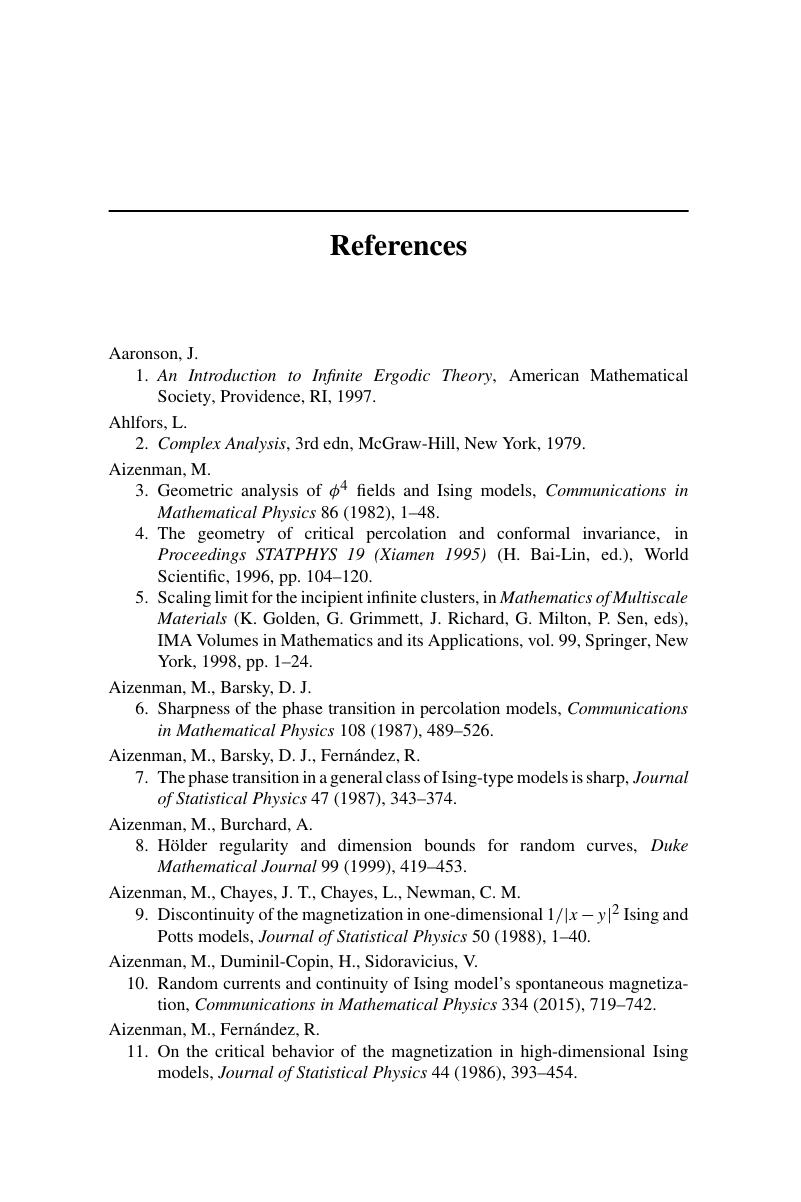Book contents
- Frontmatter
- Contents
- Preface
- 1 RandomWalks on Graphs
- 2 Uniform Spanning Tree
- 3 Percolation and Self-Avoiding Walks
- 4 Association and Influence
- 5 Further Percolation
- 6 Contact Process
- 7 Gibbs States
- 8 Random-Cluster Model
- 9 Quantum Ising Model
- 10 Interacting Particle Systems
- 11 Random Graphs
- 12 Lorentz Gas
- References
- Index
- References
References
Published online by Cambridge University Press: 12 January 2018
- Frontmatter
- Contents
- Preface
- 1 RandomWalks on Graphs
- 2 Uniform Spanning Tree
- 3 Percolation and Self-Avoiding Walks
- 4 Association and Influence
- 5 Further Percolation
- 6 Contact Process
- 7 Gibbs States
- 8 Random-Cluster Model
- 9 Quantum Ising Model
- 10 Interacting Particle Systems
- 11 Random Graphs
- 12 Lorentz Gas
- References
- Index
- References
Summary

- Type
- Chapter
- Information
- Probability on GraphsRandom Processes on Graphs and Lattices, pp. 240 - 260Publisher: Cambridge University PressPrint publication year: 2018

